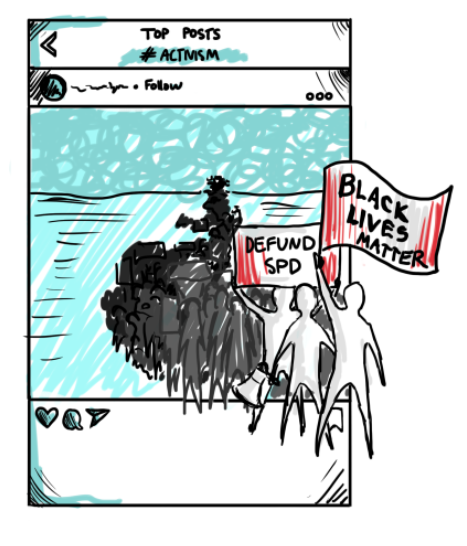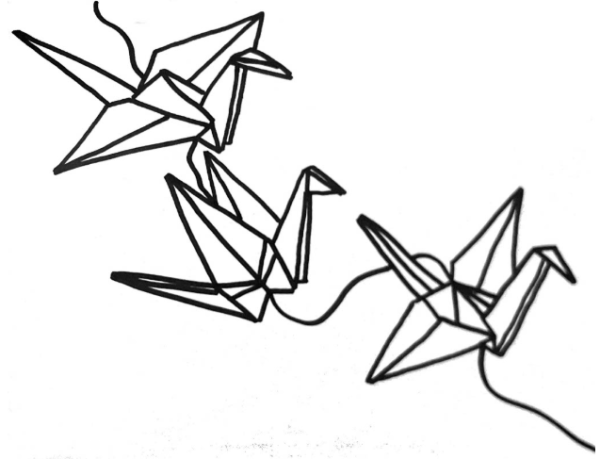Digital Activism
The difference between productive and performative.

Art By Kien-Binh Vo
Amid the many social justice issues of 2020, people are finding new ways to advocate for the causes they believe in while protecting themselves and others from the coronavirus.
One method of socially-distanced activism that has seen a significant rise this year is the use of social media. Many students at Garfield are using their social media accounts to share resources, spread awareness, show solidarity, and educate others.
Social media can be a very effective platform for activism. Cecilia Dunbar, a Garfield junior who has been using social media for activism for a few years now, says she appreciates how accessible social media is, and thinks social media is an especially impactful tool among teens.
“My ‘audience’ is primarily other high school students, and I know supporting social justice movements for us can look a lot different than how adults would do it, but we also still have a lot of power,” Dunbar said.
Social media’s accessibility to high school students is also helpful to clubs such as Green-Team, who are working to find virtual ways to continue their environmental activism, which this year will be focused on global BIPOC environmentalism. Green-Team compost manager, Alyssa Tou, said that Instagram’s accessibility offers the ability to participate in Green Team to students who may have felt it difficult to join in person.
“It’s less scary than walking into a primarily white club and searching to the ends of the earth for a seat in the crowded room,” Tou said. “It is also a great way to get out of our own echo chamber and I think the information posted on Instagram reaches more people in more meaningful ways.”
Social media can also have its drawbacks. With widespread re-posting, there is a danger of activism becoming performative and unproductive. In June, a movement for the music industry to post black squares in solidarity with the black community turned into a controversial flood of black square posts that dominated the “#blm,’ hashtag, taking up space that activists were using to share resources, petition links, and other important information. Trends like this can be damaging, especially if there is no work being done outside of posting.
“Especially in the last few months with the rise of the Black Lives Matter movement, I think social justice work has become a trend where everyone feels like they need to be seen participating, but they might not actually be doing the work,” Dunbar said “Of course, you never know what someone is doing offline so you can’t assume they aren’t doing more than what’s on their feed, but I’ve had too many conversations where the line “but I post stuff on my story” comes up as a defensive move to prove [their] anti-racism.”
In order to make sure her activism is productive, Dunbar tries to avoid reposting content that is already popular and opts to post what she finds necessary and important.
“I try to post stuff I know could make an impact in some way, like an important educational post, someone/something that needs donations, or emails to representatives that need to be sent, so that I’m not just posting to post,” Dunbar said.
The Green Team is also working to ensure their activism is beneficial and their co-president, Izzy Wang, says they are trying to balance consumable and shareable content with the complex issues they discuss, such as systemic racism, climate change, and capitalism.
“What we need right now, and what we are sorely lacking, is powerful connections that get people out into the streets and into government buildings. The Black Lives Matter movement saw that power but other movements need to see it too, for as long as it takes,” Wang said.
Dunbar says that she hopes people can learn from her that it’s okay to make mistakes in activism, and it’s important to learn from those mistakes.
“I think more people need to understand that it’s okay to be wrong sometimes and that none of us will ever be the perfect “social justice warriors” we expect ourselves and everyone else to be,” Dunbar said, “It’s ok to make mistakes, just make sure you listen when you’re corrected, make it a learning moment, and do better next time.”




